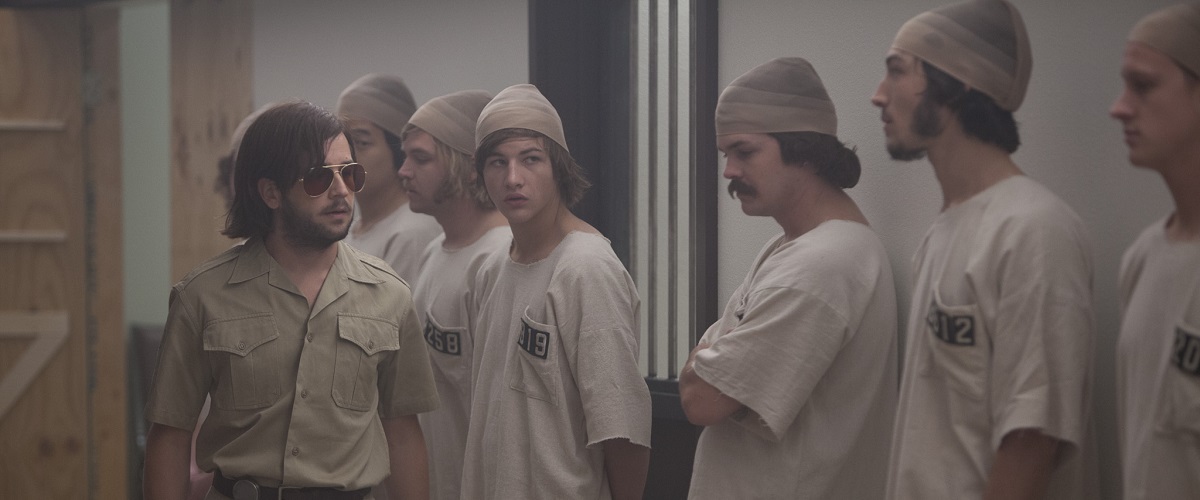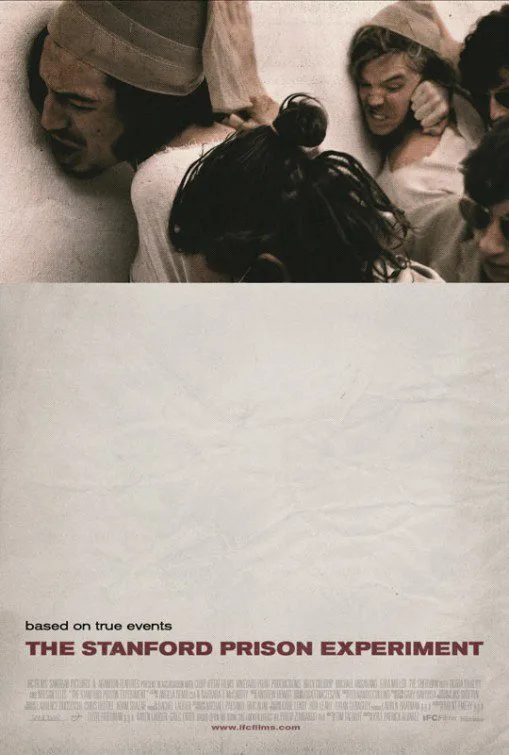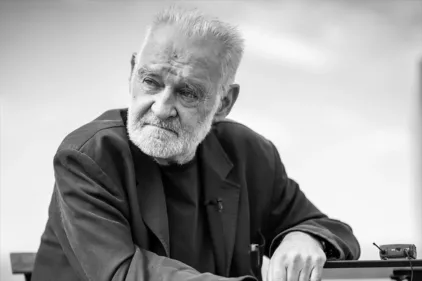Students of high school or university psychology classes are probably familiar with the Stanford Prison Experiment. Run in 1971 at the behest of the U.S. Navy, the experiment intended to investigate the cause of conflict between guards and prisoners in military correctional facilities. Dr. Philip Zimbardo and his team chose 24 male Stanford students and divvied them up into guards and prisoners. Turning the basement of one of the student halls into a makeshift prison, Zimbardo placed his subjects under surveillance and watched as the prisoners became passive and the guards exhibited authority by way of sometimes sadistic psychological torture. Zimbardo ended the experiment 6 days into its 2-week run, mostly due to the objections of his fiancée. She felt Zimbardo had become an unhealthy part of his own experiment.
A documentary about this could potentially be fascinating, as some of the actual experiment exists on film. Unfortunately, “The Stanford Prison Experiment” is a dramatization, and no matter how much it may adhere to the well-documented specifics of Zimbardo’s work, it is a massive failure. It prefers to abstract the experiment from any psychological theories or details, opting instead to merely harp on endless, repetitive scenes of prisoner abuse. One particular guard, who thinks he’s Strother Martin in “Cool Hand Luke,” abuses the prisoners. The prisoners take the abuse, rebelling once or twice before becoming passive. Zimbardo glares at a TV screen doing nothing while his guards break the rules of the contract everybody signed at the outset. Repeat ad nauseum.
These scenes are supposed to shock the viewer, but they did not work for me, because I just didn’t care. The film reduces the entire experiment to a Dead Teenager movie whose slasher just roughs them up. Prisoners are referred to by numbers in order to strip them of their personal identities, and the film keeps them at this level of distance. We never get to know any subject outside of brief sketches, so the victims become disposable. Despite the best efforts of the actors on both sides of the law, the film is completely clinical in its depiction, striking the same note for over 2 hours. It gets real dull, real fast.
I didn’t care because this isn’t remotely like an actual prison; it’s a bunch of privileged kids playing dress-up for $15 a day. Even a priest Zimbardo hires as a prison chaplain tells the doctor “it’s good that these privileged kids experience prison life.” The actual reasons for the experiment (and its military involvement) are never expressed in Tim Talbott’s screenplay, so the priest’s comment almost serves as the reason for these tests. And the film takes great pains to tell us that nobody in the experiment suffered “long term psychological damage” after it was abruptly cancelled. I’m sure someone who has experienced the harsh realities of actual prison life would feel relieved that these young men weren’t scarred.
The best scene in “The Stanford Prison Experiment” deals with an actual prisoner and serves to highlight my disdain for how the film trades emotion and details for exploitative shocks. The fantastic Nelsan Ellis (last seen in “Get On Up”) plays Jesse, an ex-con brought in by Zimbardo’s team as an expert witness to their proceedings. At a mock parole board hearing, Jesse rips into an inmate, treating him as inhumanely as possible while verbally shredding the inmate’s explanation for why he should be paroled. After the stunned inmate is sent back to his cell, Jesse reveals that he was recreating his own parole board treatment. He tells Zimbardo that playing the role of his own tormentor “felt good, and I hated that it did.” This, in a nutshell, is what the actual experiment sought to explore, that is, the nature of even the nicest human beings to commit evil. Jesse’s revelation, and the psychological toll it takes on him, is more effective than anything else the film conjures up. If only the movie had spent more time interacting with the Strother Martin-wannabe’s own thoughts rather than trudging him out only for sadism.
The film reduces Zimbardo to some kind of megalomaniac who doesn’t know what he is doing. This makes his research seem half-assed and unethical. He watches the guards strike the prisoners (a direct violation of the rules) and the film paints him as the biggest villain of all. He challenges anyone who questions his methods and authority, and at one point, he absurdly sits in a hallway like a low-rent Charles Bronson hoping for the return of a subject who might jeopardize his research. (In the actual case, Zimbardo simply moves the prison to a location unknown by the subject.) And though his intentions are to “feminize” the prisoners by giving them “dresses” that barely hide their genitalia, “The Stanford Prison Experiment” implies that Zimbardo’s sole reason for stopping the experiment was the moment when his guards forced the inmates into a gay sex pantomime. Violence and hog-tying inmates were OK, but none of that gay stuff, the movie seems to say.
Billy Crudup deserves some kind of medal for his attempt to breathe life into his one dimensional character, as do actors like Ezra Miller and Olivia Thirlby. But they are undermined by a poor script, horror movie-style music and ripe dramatizations that exist solely to make the viewer feel superior. I despise movies like this and “Compliance” because they pretend to say something profound about their scenarios but are, at heart, cynically manipulative trash designed to make audiences pat themselves on the back for not being “like those people.” Had we been forced to identify with anyone, prisoner or guard, the film might have achieved the palpable discomfort of forcing us to look at ourselves. That was one of the goals of the actual Stanford Prison Experiment. This movie just wants to superficially disturb, and it’s not even successful at that.




















